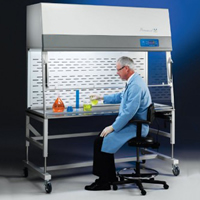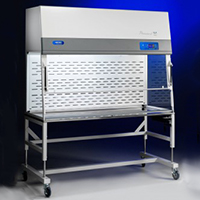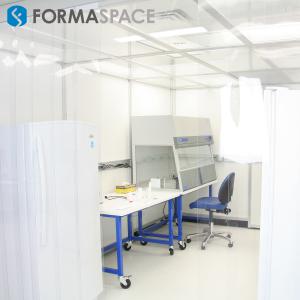Laminar Flow or Ductless – How to Select the Right Type of Fume Hood
Do you have questions about fume hood designs or how to select the right fume hood for your lab? Review our laminar flow vs ductless fume hood comparison!
If you are designing or upgrading a laboratory facility, providing a safe, secure place for your laboratory research team is a top concern. State-of-the-art fume hoods, — if designed properly and used sensibly — can protect workers by significantly reducing unnecessary exposure to toxic chemicals and radioactive materials. They can also help prevent particulate contamination in clean room environments.
Fume Hood Designs Vary Significantly Based on the Type of Hazardous Substance Used
It would be easy if there were a universal fume hood design that could handle any type of hazardous substance that you threw at it — unfortunately, that’s not the case.
That’s because fume hood designs are closely related to the specific types of hazardous substances that they can handle. This makes it especially important to set down some parameters during the design stage to identify which classes of materials that your lab can or cannot handle — now and in the future.
Comparison of Ductless Fume Hood Designs versus Laminar Flow Hoods
Traditional laminar flow fume hoods have ducting that vents the air from the hood area to outside vertical stacks. Depending on the compounds being used, it may be further filtered and/or treated. The exhaust is then dispersed, in very low concentrations, into the atmosphere.
The laminar flow approach has some disadvantages:
First, laminar flow fume hoods remove a large amount of air from the laboratory, which must be replaced by new temperature controlled air supplied by the HVAC system. This can be expensive from an energy use perspective – these types of fume hoods have been known to drive your electricity bills through the roof.
Second, it’s not possible to move laminar flow hoods around to different locations easily. They are tied to extensive ductwork systems — and typically filtration and treatment systems as well — laminar flow hoods cannot be moved without extensive renovations. Foresight and planning ahead are paramount in the design stage.
Ductless fume hoods are a primary alternative option.
In this type of fume hood, the air is treated within the unit using extensive filtering systems — typically incorporating some form of activated charcoal filtration. The treated air is then returned to the laboratory. This ductless design overcomes the two main objections of laminar flow hoods: Because the air is returned, there is less drain on the HVAC system for a lower energy cost, and ductless systems can be moved around within a laboratory relatively easily as they are not dependent on ducts mounted through the walls. They also typically plug into standard 110 or 220-volt outlet boxes. Placed on top of a Formaspace Basix with casters, the move is further simplified.
However, ductless systems have their own set of disadvantages:
Ductless systems can only be used when the chemicals passed through it are known quantities and are approved for use with the filtration system. For example, ammonia and carbon monoxide gasses will easily pass through a standard activated carbon filter. This means that each and every chemical compound that could be used in a ductless system needs to be certified to match the filtration capabilities of the system you use. Because of these limitations, ductless systems are excluded for use in experiments or processes which could produce unknown results which could evade treatment by the type of ductless filtration system in use.
There are other disadvantages as well. Ductless fume hoods require the use of expensive filters that must be replaced at regular intervals — if this is not done correctly, it will pose a significant risk to lab personnel. Noise is also another potential disadvantage — since the filtration fan unit is built into the unit.
Comparison of Advantages and Disadvantages of
Ductless Fume Hoods versus Laminar Flow Fume Hoods
Read more ... https://formaspace.com/articles/laboratory-furniture/selecting-right-type-fume-hood/?utm_source=einpresswire&utm_medium=content&utm_campaign=081516
Kelsea Marshall
Formaspace
8002511505
email us here
Legal Disclaimer:
EIN Presswire provides this news content "as is" without warranty of any kind. We do not accept any responsibility or liability for the accuracy, content, images, videos, licenses, completeness, legality, or reliability of the information contained in this article. If you have any complaints or copyright issues related to this article, kindly contact the author above.




